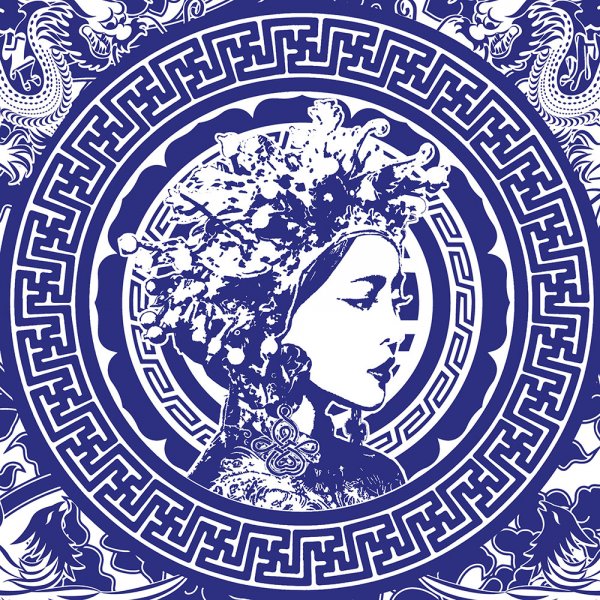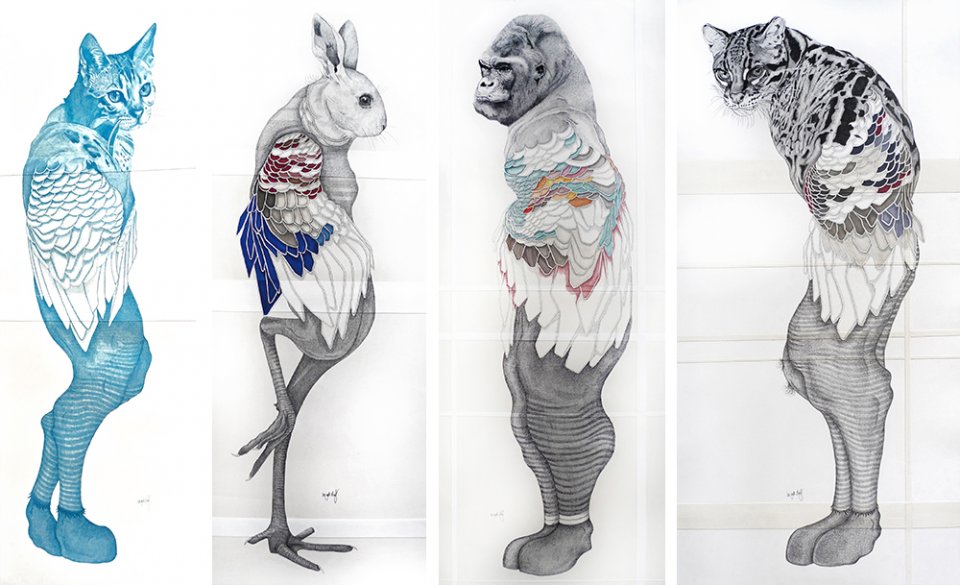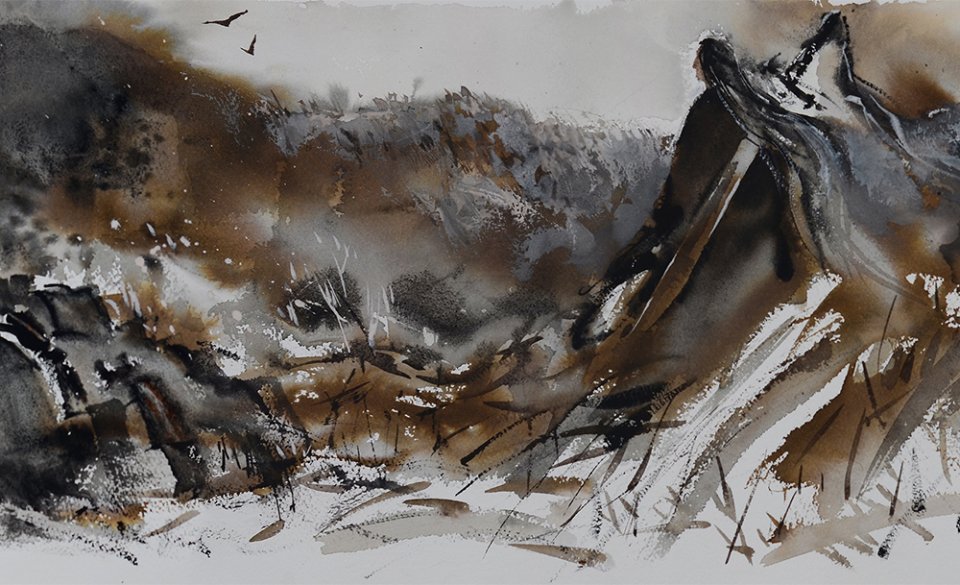4 exciting Singaporean artists on exhibit at the Singapore Contemporary Art Show
Hear what they have to say before you see what they do.

It’s all about art this month in Singapore, with festivals and events on-going since last week all the way into February. On Jan 19-22, the highly anticipated Singapore Contemporary Art Show returns for a second edition, featuring exceptional collectible pieces of art from exhibitors from 20 countries including Asia, Australia, Europe and North and South America. Whether you're an art afficionado, a collector looking for the next prized piece or someone who just enjoys looking at works of creativity, be sure to check out these four Singaporean artists. Here, they tell us more about their work, their creative processes and future plans.

"The Porcelain Bride 01" by Andre Tan
Andre liberally borrows from the motifs and design sensibility of those typical blue and white porcelain plates of the Yuan dynasty and throws in a heavy dash of Pop Art, which asks the viewers to reflect on their self-identity in a society that’s driven by Western culture and influences.
Is there a deeper message you’re trying to convey with your artworks?
Recently, I am into the aesthetics and symbolism of Chinese patterns. I am mesmerized by the intricate designs and representations behind these Chinese motifs. Referencing these aesthetics, I am trying to explore the use of monochromatic colors, asymmetrical forms and juxtaposing of popular icons or logos to give a new perspective to traditional Chinese art. Being born and bred a Chinese in a multi-ethnic environment, I am offering a playful perspective on how we are influenced by popular culture from both East and West.
You’ve incorporated Pop Art into many of your works. Are there other forms of art you’d like to try?
I have always loved the idea of painting found images in flat, vibrant colors, hence my works are often referred to as Pop. Currently I have a few series that are inspired by various Pop aspects, from street art to high fashion. I would love to explore more unconventional art techniques and materials in the near future. Perhaps I might even make my artworks into wearable pieces.
Can you take us through your creative process when putting together pieces of pop culture and making it your own?
My artworks are often inspired by my surroundings. I draw information and inspiration from everywhere. Books, comics, magazines, the Internet, television, music, fashion. My paintings are like a visual diary and a mishmash of ideas derived from these sources. Instead of sketching, I will work on my Mac to visualize the final intent of my artworks. Working on the Mac allows me to be more experimental with colors and images.

(LTR) "Fishcat", "Loyal Rabbit", "Flowerful Ape" and "Hunch Kit", all by Ieo Gek Ching
This emergingl artist’s work at the Show is highly influenced by hybridism of the natural environment and his love of ancient Egypt. He was fascinated by the ancient Egyptians’ belief that animals, both domesticated and wild, are critical sources of spirituality, companionship and sustenance.
What is it about the hybridism of the natural environment that intrigues you?
Its complex structure affords a much wider range of expressions known as animal communication. It is so complex that one cannot imagine it simply appearing from nothing in its final form therefore I find that is so much more interesting to portray animals than any other subjects. With an advocacy for the unique and unusual, I’ve developed my drawing style with a pronounced use of color, breathing a new life into my drawing style with my Animals Hybrid series.
How do you pick which two animals or entities to combine into a hybrid creature?
I attempt to draw every animal within my knowledge. I’m a big fan of cats, which resulted in a lot of big cats series. Once the portrait of the animal is completed, I choose a suitable kind of bird feather to interpret as part of the body. I usually have them standing on strong legs—like those of horses’—yet illustrated proportionally so that they are completed as the only one piece desirably obtaining as much attention within the artwork itself.
Could you take us through your creative process?
I start out on my hybrid animal drawing using pen on brown paper. I love the way it turns out on this medium because it appears worn out and old, just like how I was inspired by ancient Egyptian art. I also enjoy observing and paying attention to as many details as I can, especially in the animal’s eye. Eyes are the windows to the soul’s consciousness; each animal I draw has varying features and details shaping them up. Slowly, I’ve developed and come up with a few new series by using white paper. Through the addition of colors, it creates a much livelier energy.

"Backlane II, Kampong Glam" by Jeffrey Wandly
Local architect and artist Jeffrey Wandly may have only picked up painting seriously in 2009, holding his first solo exhibition at Artshow Busan in Korea in 2014, but already his style of swirling ink on canvas to represent beautiful buildings in Singapore and portraits of people has created a following.
What is it about architecture that intrigues you so much?
Architecture is not just about livable and usable spaces, but it is also about culture, history and identity of the place, people, environment. In short it is about life, living and humanity.
We read you speak to the buildings before you begin drawing.
“Speaking” to a building before I start my art piece is like having a conversation with an old friend, sharing stories of the past, present and future… and the chat continues throughout the whole creative process till the last drop of paint.
You've been involved in the arts since you were very young. How different is the arts scene then and now?
Arts then was an honest creative process from the heart and soul. It was part of one’s life. Today, it is vibrant but in a rather confused state. Individuals, organizations, communities and authorities need to relook at the real purpose and intent of promoting the arts.
Could you take us through your creative process for style of art?
It takes time to create an art piece and a style of art. My style has evolved through my life’s journey, observation and experiences from childhood till now; the places I have been, the people I have met, the mentors who have guided and motivated me including those who passed. My style is still evolving. The future journey will shape it further.

"Lonely Swordman" by Ng Woon Lam
As one of Singapore's highly respected third generation watercolorists, local fine artist and assistant professor Ng Woon Lam's works are a reflection of his character as a risk taker. Deceptively simple, the pieces are a product of thorough thought processes and studies.
Could you tell us more about your "newly developed practical color theory"?
My practical color theory is the result of over 20 years of painting experience as well as my understanding of educational issues in the teaching of color theory. The color theory in tertiary art institutions are still based on Itten’s Color Wheel, which was developed more than 100 years back at the Bauhaus school by Itten. The most advanced and robust color theory by Munsell, which I adopted as a painter, is not being taught very much in art institutions here, while it is used as a common industrial standard. It underpins the fundamentals of Pantone colors. Therefore, I took two years to publish this new theory book to document my 20 over years of theoretical and practical experience in the use of colors, and the Munsell Color System is the main framework I depend on.
How would you describe your style of art?
I am a risk taker in art. I like to experiment with new things when I have some new ideas. Whether it's a new approach or a new material, if I am attracted to it, I like to know how it can contribute to the making of my artwork. So, my audience may not see a fixed style. However, they do see my character in each series of new creations I make. They see that I am generally broader in execution, carefree, risky. Sometimes, the quick finishing look may make them think I work really fast. Actually, my thought process and studies could be very complex and time-consuming.
Could you take us through your creative process when starting on a new piece of work?
I work with a lot of sketches. Sometimes I try out new materials. My study process may involve two major aspects: the formal art language and the storytelling plans and my imagination. Sometimes, it also includes experiments of new materials or a new working process.
Do you feel there are enough platforms to in Singapore to showcase your work, compared to when you first started out at your high school?
The art scene has definitely improved over the last 30 years here in Singapore. However, it should not cease here. I see a lot of opportunity in Singapore’s art scene. We have the ability to adapt and understand the advancement of Western art with our advantage over language. We have also a good amount of cultural heritage and inflow of cultural influence from Southeast Asia. The melting of the East and West could become the biggest asset for us here.
Advertisement